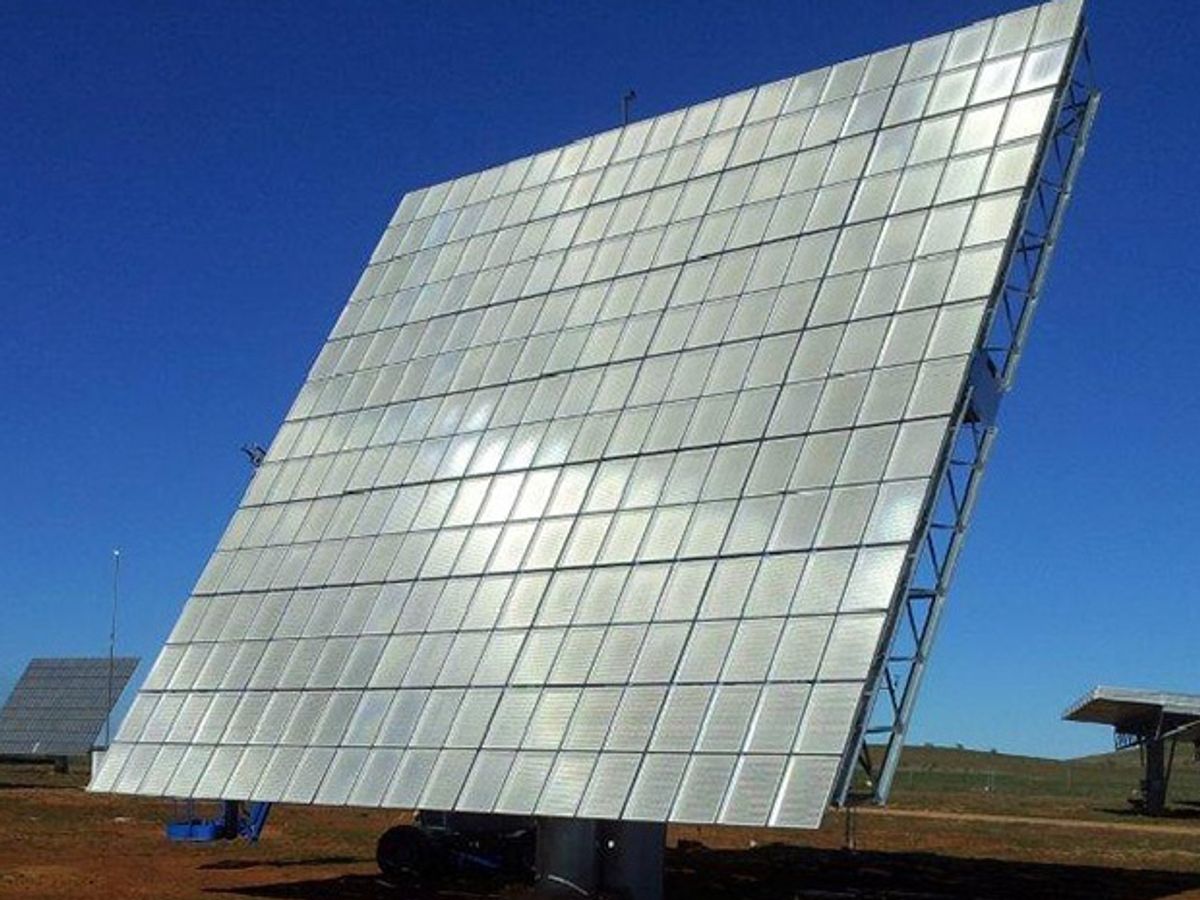Today’s concentrator photovoltaic (CPV) technologies have shown promising potential for more efficient solar power. The latest systems are said to be capable of handling the power of a hundred suns. Yet prototypes have failed to compete with cheaper flat panel solar systems that dominate the market. The U.S. Department of Energy’s Advanced Research Projects Agency (ARPA-E) is determined to push CPV to the next level. On 24 August, at the Clean Energy Summit, U.S. President Barack Obama and Energy Secretary Ernest Moniz announced a program called MOSAIC that will invest $24 million into CPV solar technology development.
Why can’t today’s CPV systems compete? The concentrators can only convert direct sunlight into energy, missing out on the large fraction of sunlight diffracted by clouds and the atmosphere. Manufacturing costs of concentrator apparatuses have also prevented CPV from reaching mass production.
That’s where the MOSAIC initiative comes in. The 11 new CPV programs under MOSAIC’s umbrella are investigating an array of system designs to address cost-efficiency and performance challenges. The list of projects include economical micro-PV cell construction, waveguiding solar concentrators, and single-junction cells that will maximize concentration under indirect and diffuse sunlight.
“ARPA-E is supporting new technology that can help the industry progress even more, but even where it is today is quite exciting,” says Sarah Kurtz, a research fellow working on CPV technology (separately from the MOSAIC effort) at the U.S. National Renewable Energy Laboratory (NREL) in Colorado.
For a large-scale commercial flat plate solar panel system, efficiency is approximately 16 to 20 percent, while a typical CPV system is 25 to 30 percent. In engineering labs, efficiency test results show that the gap between CPV technology and flat planel photovoltaics is even greater. Research groups have created CPV cells that convert more than 40 percent of the light that strikes them to electric current—the highest marks received in testing environments. Three of these groups’ systems have even passed the 46 percent mark.
“This means that these results are very repeatable,” says Keith Emery, a principal scientist who measures solar cell efficiency at the National Center for Photovoltaics at NREL. “I wouldn’t be surprised that by the next two or three years, an individual research group will reach 50 percent efficiency. Fifty percent is a realistic goal that people have on the drawing board.”
CPV maximizes efficiency by using multiple optical elements such as mirrors and lenses to reflect light into a super concentrated beam that is aimed at a solar cell. Machinery adjusts the panels throughout the day so that the cells are exposed to a maximum amount of direct sunlight. The technique is similar to the way you would move a magnifying glass while burning your name into a piece of wood, explains Kurtz.
The optical elements make it possible to use smaller, higher performance solar cells. The miniaturized cells make it easier to modulate their movement to prevent overheating and degradation. Some labs have even constructed cells as small as 1 square millimeter; they can generate more power in less space than flat panels can.
The next push is to make CPV materials that are even greener and cheaper than flat plate photovoltaics. Engineers are testing mirrors constructed from recyclable plastic, with aluminum-based reflective coatings, says Kurtz.
As the energy industry slowly transitions old fossil fuel plants into photovoltaic and other renewable power plants, solar energy can become a larger part of the electric grid.
“There is a rumor that solar is the technology of the future,” Kurtz says. “It has grown a lot, but it is still a minuscule part of the electricity we use.” While photovoltaics provide only about 1 percent of the electricity generated in the U.S., the rate of solar installation is increasing every year. “If we maintain industry growth rates long enough, solar could be at something like 25 percent of the world’s electricity production,” says Kurtz.



